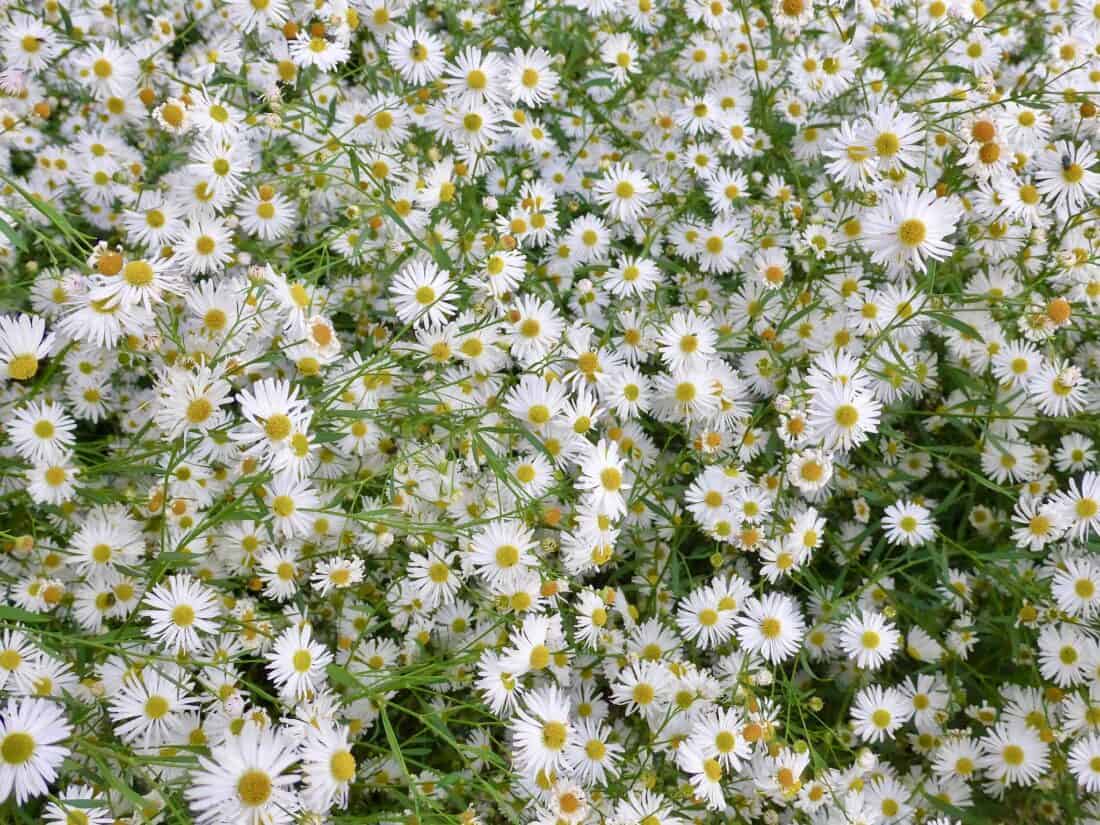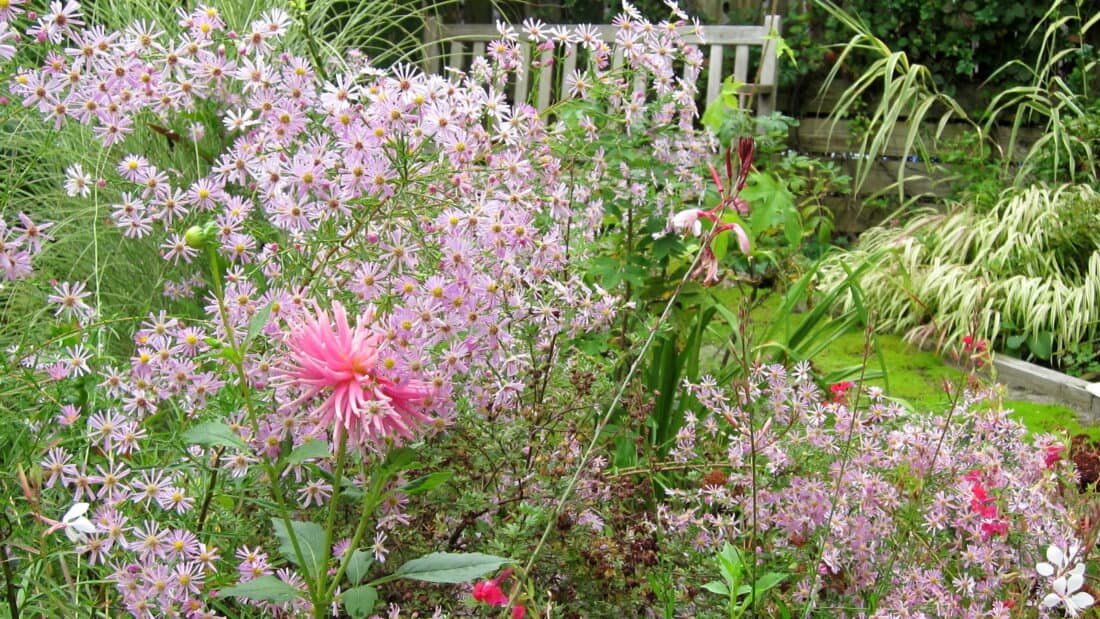Today, as I was walking through the gardens (it is the first of October as I write this), one of our gardeners told me there was a flurry of snow in her garden. Not to cause alarm, although snow has already fallen in some parts of the United States. She was referring to the wonderful, creeping Aster called ‘Snow Flurry.’ Snow Flurry aster is known botanically as Aster ericoides ‘Snow Flurry.’
Some taxonomists have rewritten the asters into several different genera, so this one is now known as Symphyotrichum ericoides ‘Snow Flurry.’ The cultivar name is also written as ‘Schneegitter,’ which I assume is German for sneeze getter. Or snow flurry. If I spoke German, maybe I would know the real meaning.

Using Aster ericoides in the Garden
Snow Flurry Aster is a fantastic, late-season flowering ground cover.
Aster ericoides is a native plant that reaches a height of 6-8″ in height by 2′ in spread. It has fine leaves slightly resembling Erica plants, thus the common name of heath-aster.
This perennial should be grown in full sun with well-drained soil. It is very tolerant of dry soils.
Snow Flurry is covered with 1/2″ diameter white flowers in late September and into early October. They are characterized as ray flowers.
(I looked up what that means exactly – and this is what the dictionary provided: “one of the marginal flowers of the head in a composite plant (such as the aster) that also has disk flowers.” )
Do not ask me to translate that for you – I don’t get it either. (But, a diagram here might help clarify – I can’t, however, attest to its accuracy.)
Here is my layman’s description – they have skinny little petals that radiate from a yellow center. The petals are so thin they can almost appear like tufts of white hair.
Also – the flowering stem has lots of flowers – so you get a whole spray of blooms when cutting them for flower arrangements, and if left in the garden, they look like mounds of snow).
In masse, Snow Flurry makes quite a show when in bloom. It flowers in the late summer/early fall (in my garden in New England, it is September into October). It does kinda look like snow if you squint hard while looking at it through the fog with someone else’s glasses (not that I have ever tried this).

Maintaining Aster ericoides
Once Snow Flurry aster is done flowering, I would remove all the spent flowers unless you want tons of aster seedlings everywhere next year.
We have a mass growing on a rocky ledge along our Haney Hillside Garden at Coastal Maine Botanical Garden. These asters thrive in rocky soils and are known for being excellent in rock gardens. For the next few weeks, it will be one of the most asked-about plants in our garden.
If you want to improve the selection of plants in your garden in the fall – these early fall favorites are far better than chrysanthemum asters. They are hardy to the entire east coast of North America (where they are also native). Because they are native plants, you will find they are the happy home to many pollinators during a season when little else is flowering in the garden.
–Rodney

Where to Buy Native Fall Asters
Purchase Snow Flurry Aster (also commonly called White Heath Aster) at North Creek Nursery.
Aster Ericoides (or Symphyotrichum ericoides) also comes in a few other colors –
Look for Symphyotrichum ericoides ‘pink’ and Aster ericoides ‘pink star’ – both, as you would expect, are pink.
Similarly, Symphyotrichum ericoides ‘blue wonder’ is a blueish lavender color.
Aster ericoides ‘Monte Cassino’ is white, but it is taller, and it is a better cut-flower due to its longer stems (up to 3 feet tall).
+comments+